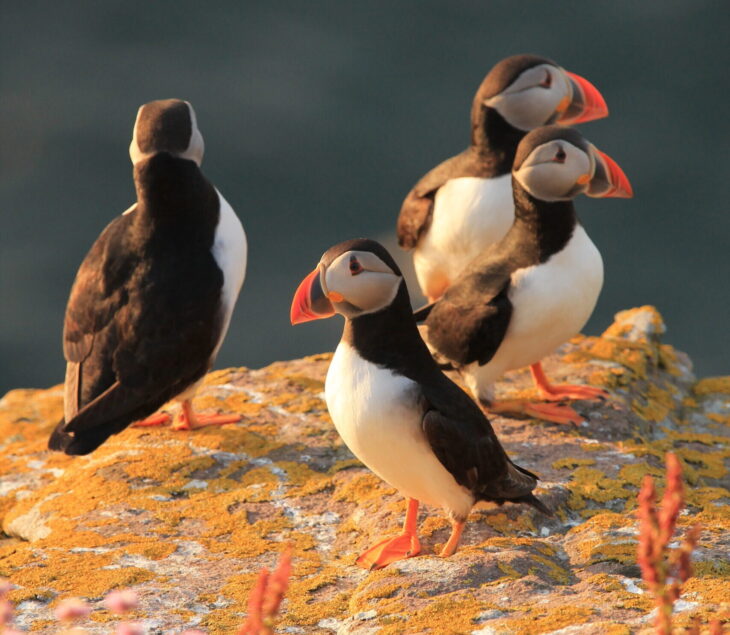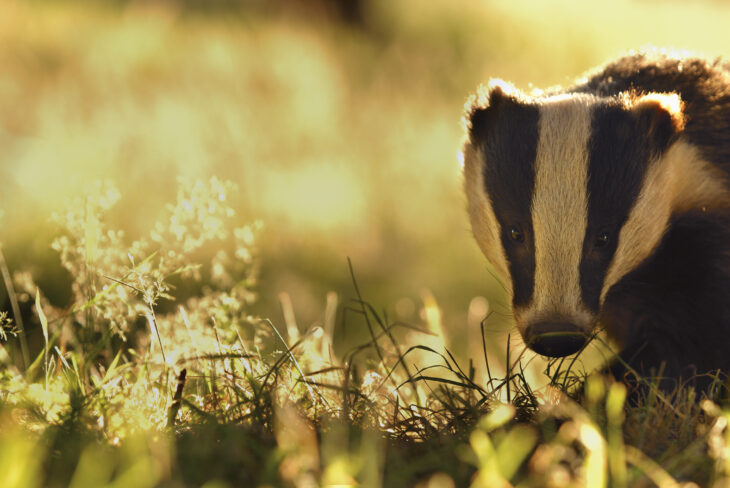Why 2022 is a critical year for biodiversity
The beginning of the year is often a time for reflection and provides a good opportunity to look ahead. Doing so this year highlights what a big year 2022 will be for biodiversity in Scotland. The Fifteenth meeting of the Conference of the Parties (COP15), the governing body of the?Convention on Biological Diversity?concludes in Kunming, China in May and will set?the?global biodiversity framework?for the next decade.?The Scottish Government has also committed to bring forward a new Biodiversity Strategy in October and its delivery plan six months later. This all comes at a time when we enter the second year of the UN’s Decade on Ecosystem Restoration.

Some of the key decisions for this year have already been taken. In December the Scottish Budget set out the Scottish Government’s priorities for 2022/23 in terms of where it will spend public money. Every year these choices are getting harder to make, as the demands on the public purse continue to grow and finances get tighter. And yet the reality is that the costs of inaction – if we don’t act decisively now – will dwarf the cost of action. Kate Forbes, the Cabinet Secretary for Finance and Economy, set out in the Budget that the three strategic priorities were tackling inequalities, securing a just transition to Net Zero and investing in economic and public service recovery.
At first glance this begs the question of what happened to the recognition in the Programme for Government that the climate and nature crises together “are the greatest threats facing people and the planet”? The worry is that in a short space of time the nature crisis has been demoted and is no longer getting the prominence that it merits and was given just a few months ago.
The worry is that in a short space of time the nature crisis has been demoted and is no longer getting the prominence that it merits and was given just a few months ago.
A more considered review of the Budget doesn’t go very far to allay these fears. The main announcement for nature was £53m to protect and restore habitats including peatlands and £69.5m for grants for woodland creation and management. Unfortunately, not much of the funding is actually new money representing an increase for biodiversity and is well short of the levels required to jump start the transformation in nature that is essential for our future wellbeing. Little has been done to reverse the steep declines in Scottish environment funding seen in the previous ten years.
For example funding for NatureScot, Scotland’s nature agency, will be £50m in 2022/23. This may sound like a lot but it is actually less than the £55m allocated ten years ago (before taking inflation into account) and well below the £90m it would receive if it had the same share of government spending as in 2012/13.
It’s difficult to put a figure on exactly how far off the mark current funding for biodiversity is in Scotland. The RSPB has estimated that at least £500m is needed annually in Scotland to deliver the necessary priority actions for nature. In addition, research by the Green Finance Institute (using a wider definition) estimates £800m a year is needed over the next 10 years to achieve existing nature-related commitments.

Things urgently need to change in Scotland (and beyond) and there are both opportunities and challenges in doing so this year. Firstly, the Autumn Budget and Spending Review 2021 announced by the UK Government in October included significant increases in spending in England for the Department for Environment, Food and Rural Affairs (DEFRA) which included increases to halt biodiversity loss by 2030. Such increases do feed directly through into proportional increases in Scotland’s block grant. However, there is no guarantee how this funding will be allocated and the sums involved are not sufficient alone to deliver the step change required.
Things urgently need to change in Scotland (and beyond) and there are both opportunities and challenges in doing so this year.
Secondly, the Scottish Government will publish its multi-year Resource Spending Review in May which will set out spending plans for the remainder of the parliamentary term (up to 2026/27). This is a clear opportunity to put funding to address the nature emergency on a new footing commensurate with the urgency needed to tackle one of the greatest threats we currently face. However, early signs are not encouraging. The priorities set out in the consultation document are similar to those set out in the Scottish Budget. There is not one reference to nature or the biodiversity crisis although the protection and restoration of our natural environment is highlighted under climate change, which seems to be falling into the trap of assuming that the nature crisis is simply a subset of the climate crisis.
Thirdly, the current plan to develop a new Scottish Biodiversity Strategy this year is an opportunity we must grab with both hands. Investment in nature-based solutions and biodiversity must be embedded at the heart of Scottish Government’s approach to climate and wellbeing. However, as the strategy is not due until October and the delivery plan in April 2023, it is vital that when the Resource Spending Review is signed off in May that it includes funding of the scale required to deliver the full range of biodiversity interventions on land and in the sea.
There is still much to be done if this big year for biodiversity is to turn into a transformative one. The dots must be joined so that we don’t repeat past mistakes. This time our biodiversity ambitions must be backed by the necessary funding earmarked to deliver them. Public money alone will not be enough and we will also need new innovative ways to finance private investment in our natural infrastructure such as those set out in the Route Map to £1bn which was facilitated by the Scottish Wildlife Trust and SEPA. Time is running out if Budget 2023/24 is to be the first in a landmark series that delivers the funding necessary for transformative change in biodiversity in Scotland.
Dougie Peedle, Head of Policy
Help protect Scotland’s wildlife
Our work to save Scotland’s wildlife is made possible thanks to the generosity of our members and supporters.
Join today from just £3 a month to help protect the species you love.
Preface
The beginning of the year is often a time for reflection and provides a good opportunity to look ahead. Doing so this year highlights what a big year 2022 will …
